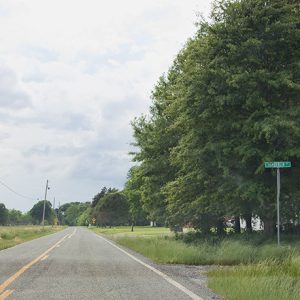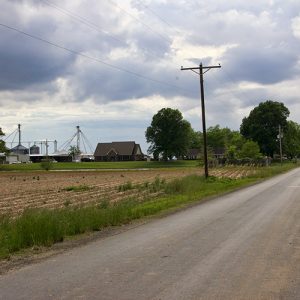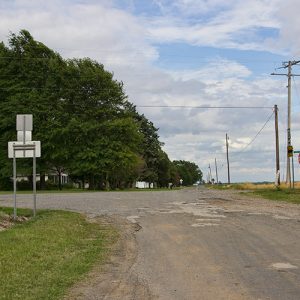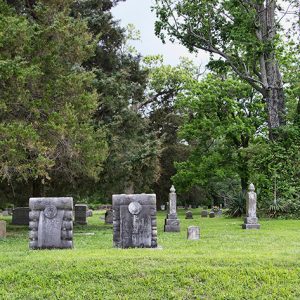calsfoundation@cals.org
Tomberlin (Lonoke County)
aka: Tomberlins
The community of Tomberlin (a.k.a. Tomberlins) is the southernmost settlement in Lonoke County. It is on the edge of the prairie near the Delta’s origin, where the land is fertile and cotton was king in the early years. Tomberlin is twenty-two miles south of Lonoke (Lonoke County) and about the same distance from Pine Bluff (Jefferson County).
The community was named for James E. Tomberlin, who arrived there after the Civil War. Nothing is known of Tomberlin’s family history. Records show that in 1869 Tomberlin paid taxes on 701 acres in Prairie County, some of which became Lonoke County. He rented land there and employed sharecroppers. He established a commissary to supply his tenants, and this store became known as Tomberlins. Tomberlin was a bachelor when he arrived in the community, but he later married the widow of one of his landlords, Francis Flynn. Nothing is known about his life after this marriage, and he left no survivors. He was buried in a roadside cemetery near his store, but the tombstone was removed.
Later another store and a saloon, The Hole, were erected at the Tomberlin location. Other businesses included a drugstore, an undertaker, a blacksmith shop, a Woodman Lodge hall, and general merchandise stores. Postal service began in 1882.
Around 1900, with the area’s increasing population, more stores were established. These were a half-mile north of the original Tomberlin store because a change in the county road system meant the road bypassed the old location. Lee Buffalo, who owned the land where the town was relocated, had it platted in 1903. He sold lots, with most being purchased by the merchants and their employees.
There were one-room schools around Tomberlin before 1903. That year, a large four-room, two-story building was erected east of the town site on property owned by Judge A. J. Walls; two more rooms were added later. The structure was razed in 1928, and a two-story brick building of sixteen rooms and an auditorium was built on the site. This building served the community until the 1960s, when the schools were consolidated with those of England (Lonoke County), seven miles away. Today, only a marker rests on the site of the former school.
Establishment of the first church at Tomberlin is unknown, but records show that on November 7, 1895, R. B. and Annie F. Carl Lee deeded land to the trustees of Indian Bayou Methodist Episcopal Church South for a building and cemetery. The building was damaged by storms twice and was razed in 1939. Services were held in the Tomberlin school building until the new building was completed in 1940. The church held a centennial service on March 24, 1996, but it was torn down in 1999. The Baptist church was erected in the 1800s a mile east of town. It served Landmark (Missionary) and Southern Baptist congregations. A new building was built in 1920 closer to town, but dissension developed, and a group withdrew and formed a new church at nearby Coy (Lonoke County). The Landmark congregation remained at the site until June 7, 1992, when the last service was held. The building was given to a black congregation and was moved to Ferda (Lonoke County).
Cotton farming was the community’s primary enterprise. On property adjoining Tomberlin, Larry Buffalo built a cotton gin. Sam Dardnne and Willis S. Chaney operated the gin until 1918, when it was abandoned. Another gin, abandoned in the early 1900s, was built by Irvine Shifflett on his farm two miles southeast of town.
Tomberlin was at its height of development in 1913 but soon faced decline. A railroad offering freight and passenger service was constructed two miles north of town. The post office was discontinued on June 30, 1915. The Depression hit Tomberlin hard, and World War II caused a migration of farm workers to larger cities. Today, several homes remain in Tomberlin, but no stores. The home of state Representative Andrew Jackson (A. J.) Walls in Tomberlin was listed on the Arkansas Register of Historic Places in 1995; the Walls Barn and Corn Crib were named to the National Register of Historic Places at the same time. These properties were torn down about twenty years after their respective listings.
For additional information:
Walls, J. E., and Bobby G. Wright. “Tomberlin Cemetery.” Arkansas Family Historian 19 (March 1981): 7–18.
Walls, Joseph Edward. “Tomberlins, Lonoke County, Arkansas.” The England Democrat. January 3, 1990, p. 5.
“Walls Structures Listed on National, Arkansas Historic Places Registers.”The England Democrat.September 20, 1995, p. 8.
Edwina Walls Mann
Little Rock, Arkansas
Joseph Edward Walls
England Manor
 Donaghey Mock Funeral
Donaghey Mock Funeral  Lonoke County Map
Lonoke County Map  Tomberllin
Tomberllin  Tomberlin
Tomberlin  Tomberlin
Tomberlin  Tomberllin Cemetery
Tomberllin Cemetery 




Comments
No comments on this entry yet.